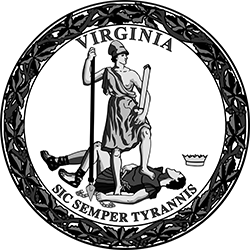The Tech Talent Investment Program (TTIP), launched in 2019, is a historic $1.1 billion, 20-year investment in Virginia’s tech talent pipeline. TTIP was conceived as part of Virginia’s 2018 winning proposal to Amazon for HQ2. Participating institutions have set goals to increase the number of BS and MS graduates in Computer Science and related fields […]

Improving Virginia's Career Readiness System: The Equity of Virginia's Career Readiness System (Brief #6)
The international, non-partisan Organisation for Economic Co-operation and Development (OECD) recently conducted an in-depth review of career readiness activities in K-12 schools in Virginia. The study is part of the OECD Career Readiness project, which is examining and benchmarking career readiness practices across the globe in an effort to help governments, schools, employers, and other stakeholders better prepare students to enter the workforce. The final report was published on December 1, 2023, and is available here. The report examines the Commonwealth’s career readiness system along the dimensions of effectiveness, efficiency, and equity. This brief, the sixth in a series, reviews OECD’s assessment of the equity of Virginia’s system. To assess equity, OECD examined how well the Commonwealth’s system addresses additional barriers certain groups of students face when progressing through the education system and into the workforce. It highlights what Virginia is doing well and makes two recommendations for improvement.
Strengths of Virginia
OECD recognized Virginia’s existing efforts to reduce disparities and provide appropriate career readiness experiences to all students.
Key strengths of Virginia include:
- Virginia offers multiple education pathways and programs to meet diverse student needs and interests. These include technical centers, magnet schools, Governor’s schools, dual enrollment, and co-operative education.
- Career and technical education (CTE) programs are offered through comprehensive high schools. This model increases the appeal of CTE and keeps options open for CTE and non-CTE students.
- School divisions have the autonomy to implement programs and activities that best fit their students and the local labor market.
Recommendations for Virginia
While OECD appreciated Virginia’s focus on meeting varying student needs and interests, there are still significant disparities in students’ education and career outcomes. To ensure more equitable results, OECD makes two recommendations for improving the Commonwealth’s career readiness system.
Recommendation 1
Virginia should consider focusing more on equity in career readiness policy and targeting additional resources and support towards students from disadvantaged groups to improve labor market outcomes and narrow disparities.
While Virginia offers a variety of programs and pathways to meet diverse student needs, students with different demographic characteristics still experience varying levels of success in post-secondary education and the labor market. The OECD survey (see Brief #2) highlighted that young adults from disadvantaged groups are at a higher risk of being unemployed, not pursuing education, and earning lower wages. Additionally, demographics are also strongly tied to occupational choice, indicating that students may feel restricted by societal norms associated with their backgrounds. The survey responses also suggest that certain groups of students are less likely to engage in important career readiness activities, such as apprenticeships.
To better meet the needs of all students, OECD recommends that Virginia make equity a more explicit component of the career readiness system, with a focus on student outcomes, not just programming. As described in Brief #4, OECD believes that the Commonwealth should more clearly delineate the career readiness standards and expected outcomes to make the system more effective. These standards can also help improve the equity of the system by addressing occupational stereotypes and other barriers that limit certain students’ opportunities, starting in elementary school. By collecting more data about students’ career readiness experiences and outcomes, schools will also be able to better identify those individual students or groups of students requiring additional support.
Recommendation 2
Virginia should consider using digital resources to provide more diverse career readiness experiences to students, regardless of geography.
Results from the OECD surveys of Virginia young adults and high school students suggest that career readiness experiences and education and career outcomes vary significantly by region and urbanicity, in addition to demographics. Based on their interviews with students, OECD determined that career readiness activities and perceived job opportunities are strongly tied to the local job market and what schools in the region can offer.
OECD recommends that the Commonwealth expand the use of digital resources to provide students across the Commonwealth with more diverse and comprehensive career readiness experiences. Many different types of activities can be held remotely, including job shadowing, career talks, and job fairs. Technology can connect schools and students with employers across the state, not just in their region. Digital resources can also provide students with up-to-date information about the labor market and the education and skills required for different occupations.
Conclusion
Virginia already offers a variety of pathways and programs to meet the needs of students. To improve parity in education and career outcomes, Virginia should make equity a more explicit component of the career readiness system and expand the use of digital resources to provide all students with diverse and comprehensive career readiness experiences.
Read and download the brief here

